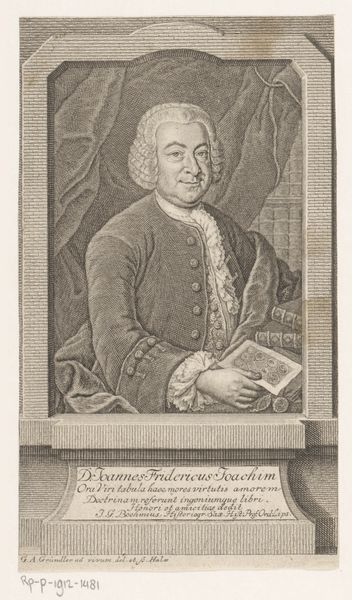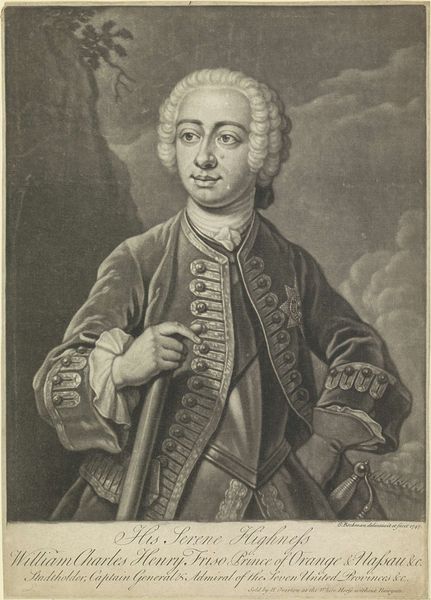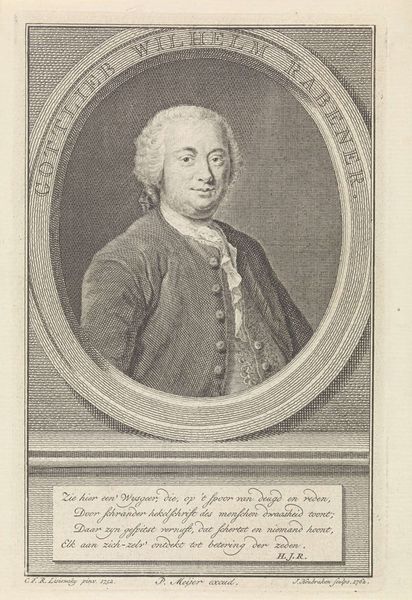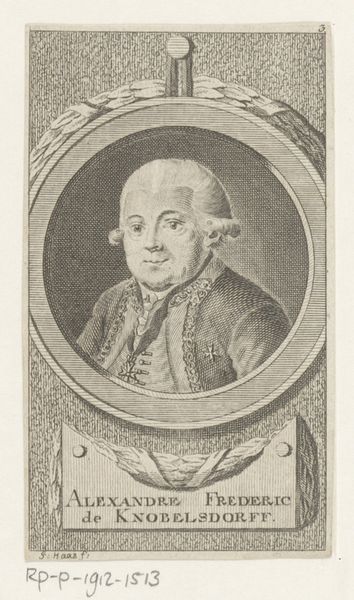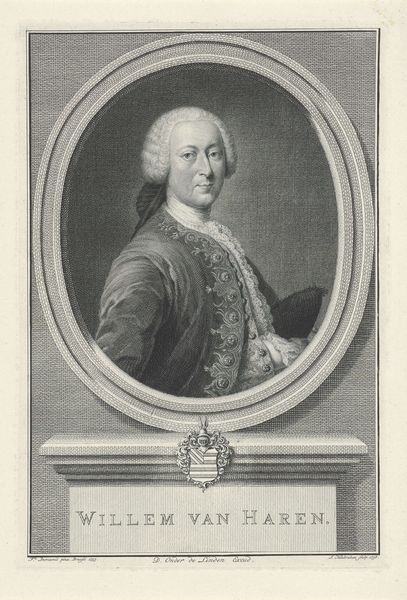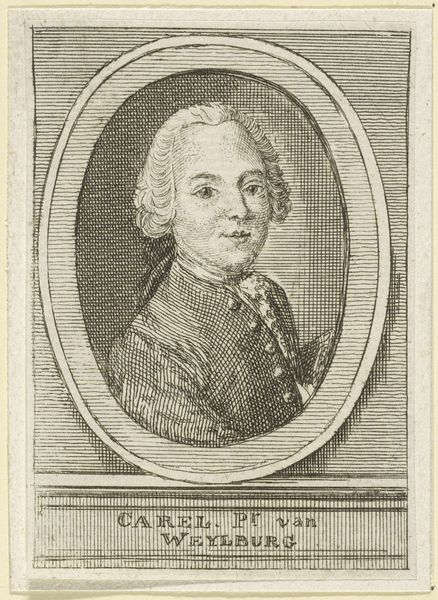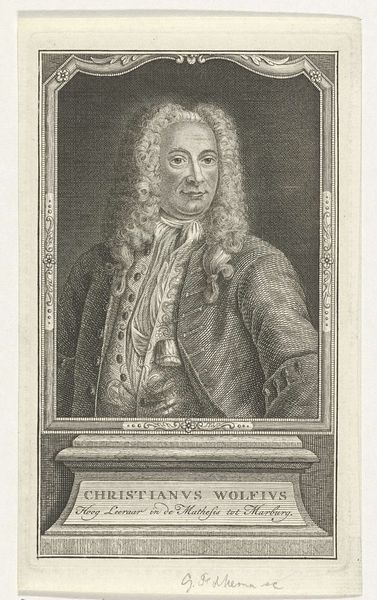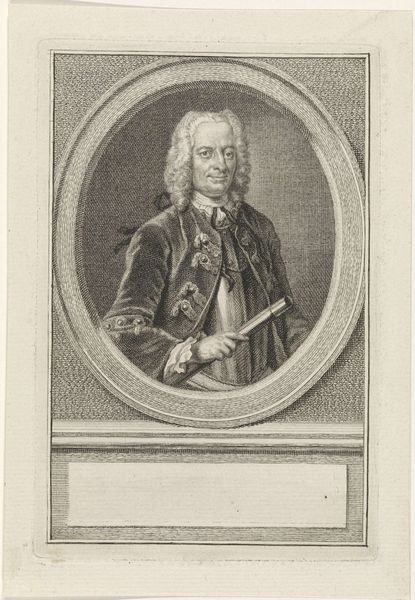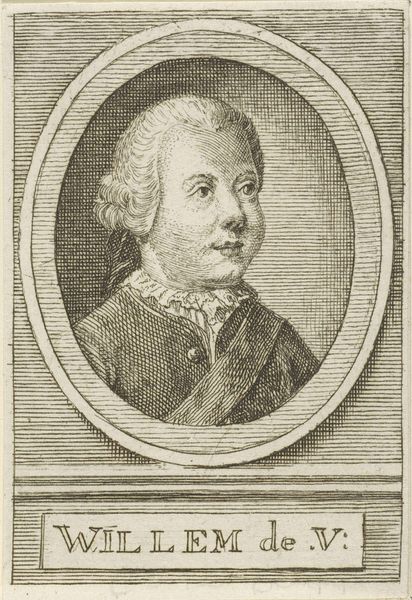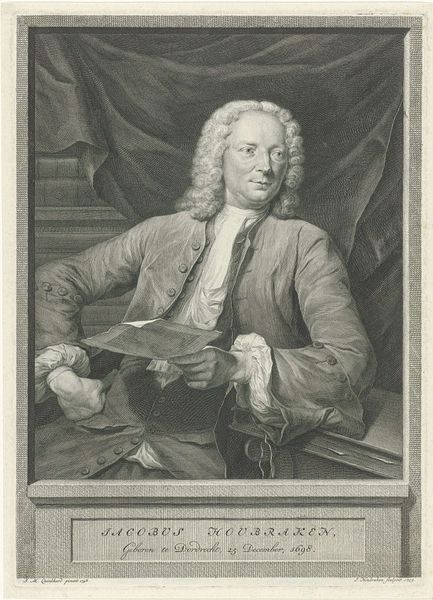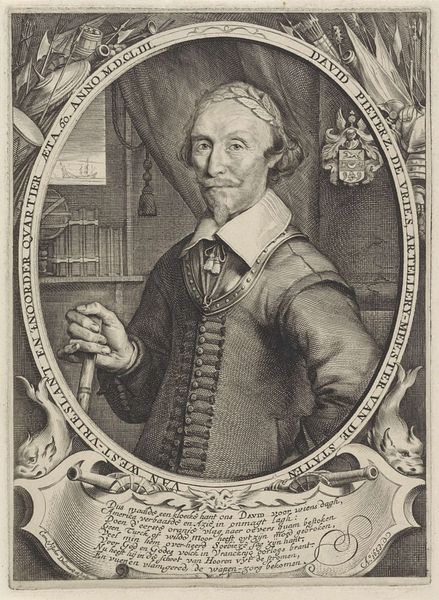
print, engraving
#
portrait
#
baroque
# print
#
old engraving style
#
caricature
#
portrait reference
#
portrait drawing
#
history-painting
#
academic-art
#
engraving
Dimensions: height 159 mm, width 118 mm
Copyright: Rijks Museum: Open Domain
This is an engraving of George Anson, made by Jan Caspar Philips in the 18th century. Engraving is an intaglio process, meaning the image is incised into a plate, usually copper. The plate is then inked, and the surface wiped clean, leaving ink only in the etched lines. High pressure forces the paper into the lines, transferring the image. Look closely, and you can see the characteristic crispness of the lines, each one deliberately placed to create shading and form. The act of engraving was laborious, demanding skilled hands and specialized tools. Each line represents hours of concentrated work. In its time, this portrait would have circulated widely, spreading Anson's image and solidifying his status as a naval hero, and Great Britain as a major power. Considering the material and the making, the engraving speaks volumes about the social and political context of its time, reflecting power, labor, and the spread of information in the age of empire.
Comments
No comments
Be the first to comment and join the conversation on the ultimate creative platform.
